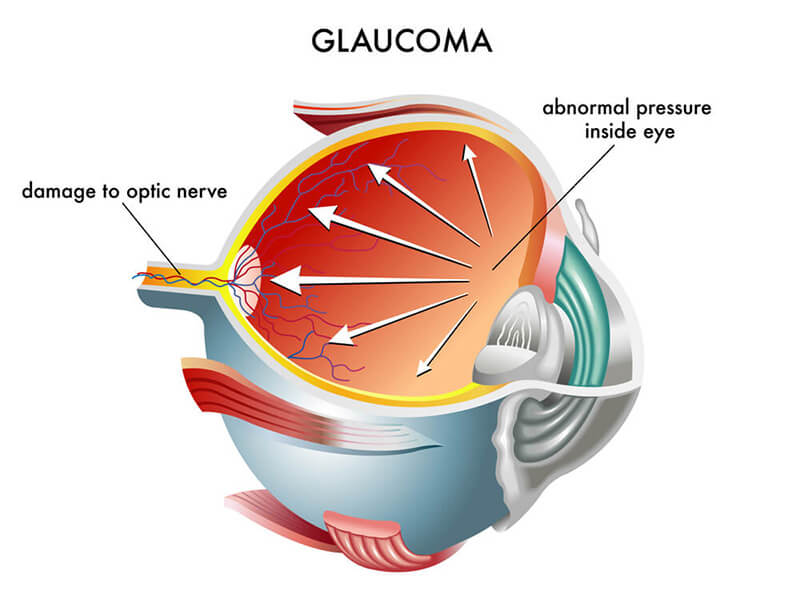Glaucoma is one of the most common causes of blindness in this country. It has no symptoms in its early stages and can only be detected with careful, thorough eye examinations. In later stages, optic nerve damage is associated with permanent loss of vision. Timely diagnosis and treatment can help prevent or postpone that process.
Glaucoma is not a single entity. It is actually made up of many different conditions that share the characteristic of pressure in the eye that is too high for the long-term health of the eye. While it has no early symptoms, there are certain risk factors that increase an individual’s risk for developing glaucoma.

Factors that increase the risk of glaucoma include a family history of glaucoma, history of significant trauma to the eye, use of steroid medications, and certain systemic diseases associated with inflammation such as rheumatoid arthritis, ankylosing spondylitis and sarcoidosis. Other considerations include race, tobacco use, Diabetes and advanced cataracts.
African Americans are at greater risk of developing glaucoma and it tends to be more aggressive for them as well. Both Type I and Type II diabetics have to be screened carefully as they are also at greater risk. Age is also a risk factor, which means that even someone with no other known risk factors needs regular screening after age 55. These are considered risk factors because of the documented increased association between their presence and the eventual development of glaucoma. This is not to say that every patient with one or more of the risk factors develops glaucoma, nor can you assume you are”safe” if you do not have any risk factors. Your doctor will assess the relative risk of glaucoma for you.
To evaluate the risk of developing glaucoma, certain screening tests are done in the course of a complete eye examination. Visual acuity, pressure inside the eye (intraocular pressure or IOP), corneal thickness, peripheral vision (“visual fields”) and optic nerve appearance are all important in determining the likelihood for glaucoma in any individual. Other more specialized tests can be performed if your doctor needs further clarification of your glaucoma risk profile.
The treatment of glaucoma has improved greatly in the last few years. We now have several classes of medications (usually in the form of eye drops) that can be used individually or in combination with each other. In addition to drops, laser surgery and traditional surgery can be performed. The goal of all these therapies is to lower the IOP, thus protecting the health of the optic nerve. Your doctor will determine the best therapeutic option with your specific needs in mind. You must work with him and follow up regularly to prevent vision loss.
New ways of diagnosing and treating glaucoma are becoming available. As promising tests and therapies are established, we will make sure that they are available to our patients. Laconia Eye & Laser Center has a state-of-the-art imaging system known as Optical Coherence Tomography (OCT) which can detect early damage to the optic nerve. These tests provide information on anatomical and functional characteristics of the eye and are considered the most sensitive and specific methods currently available to detect and help monitor glaucoma. Laconia Eye & Laser also uses the latest advancements in treating glaucoma by using the SLT laser. Click here to learn more.
Although Glaucoma is potentially blinding, with early diagnosis and treatment the risk to the patient is kept to a minimum. We here at Laconia Eye & Laser Center strive to maintain the highest level of care for our patients and will happily discuss your particular risk level and a therapeutic plan with you.

 (603) 524-2020
(603) 524-2020 Order Contact Lenses
Order Contact Lenses Pay Your Bill Online
Pay Your Bill Online



